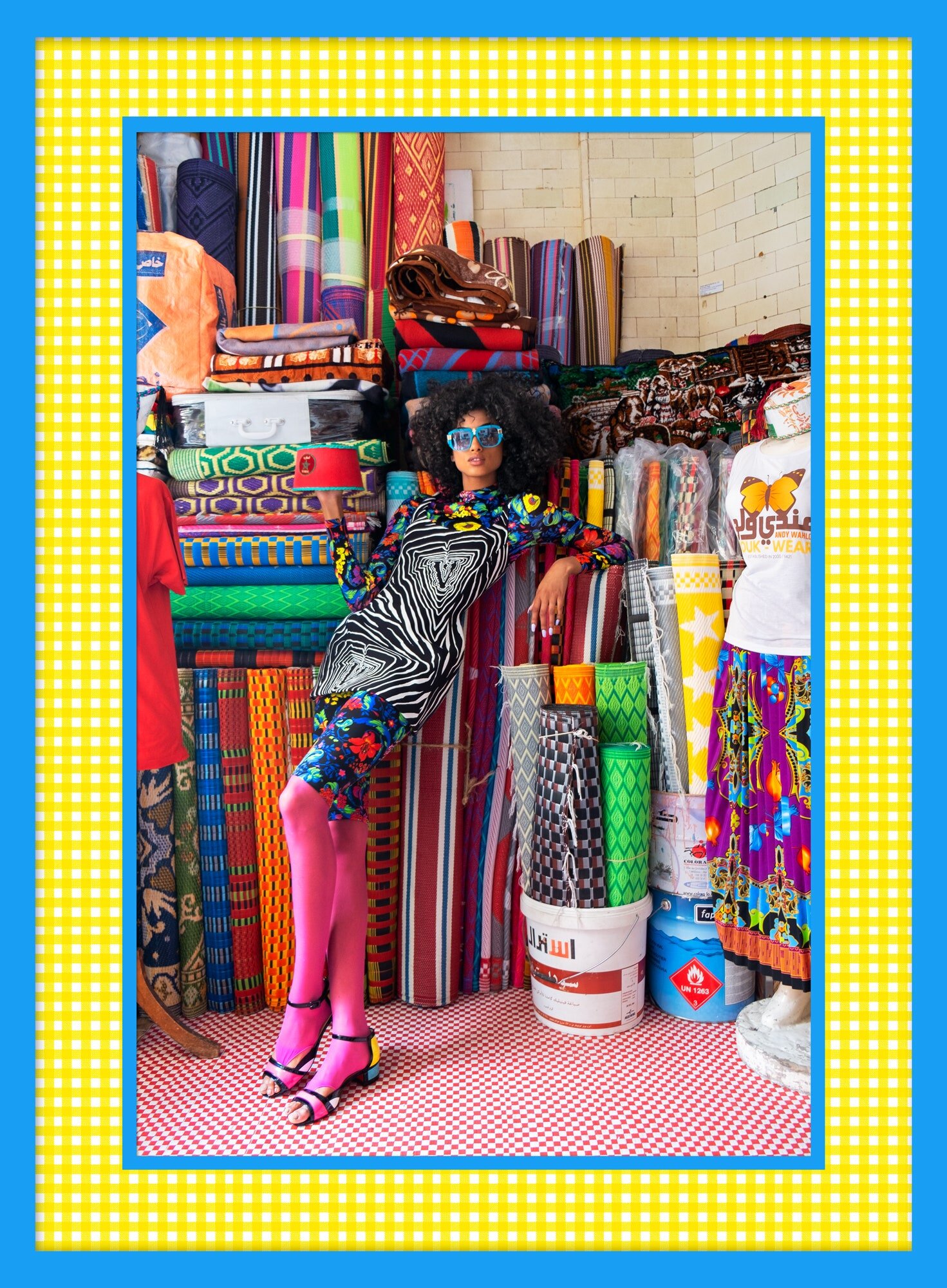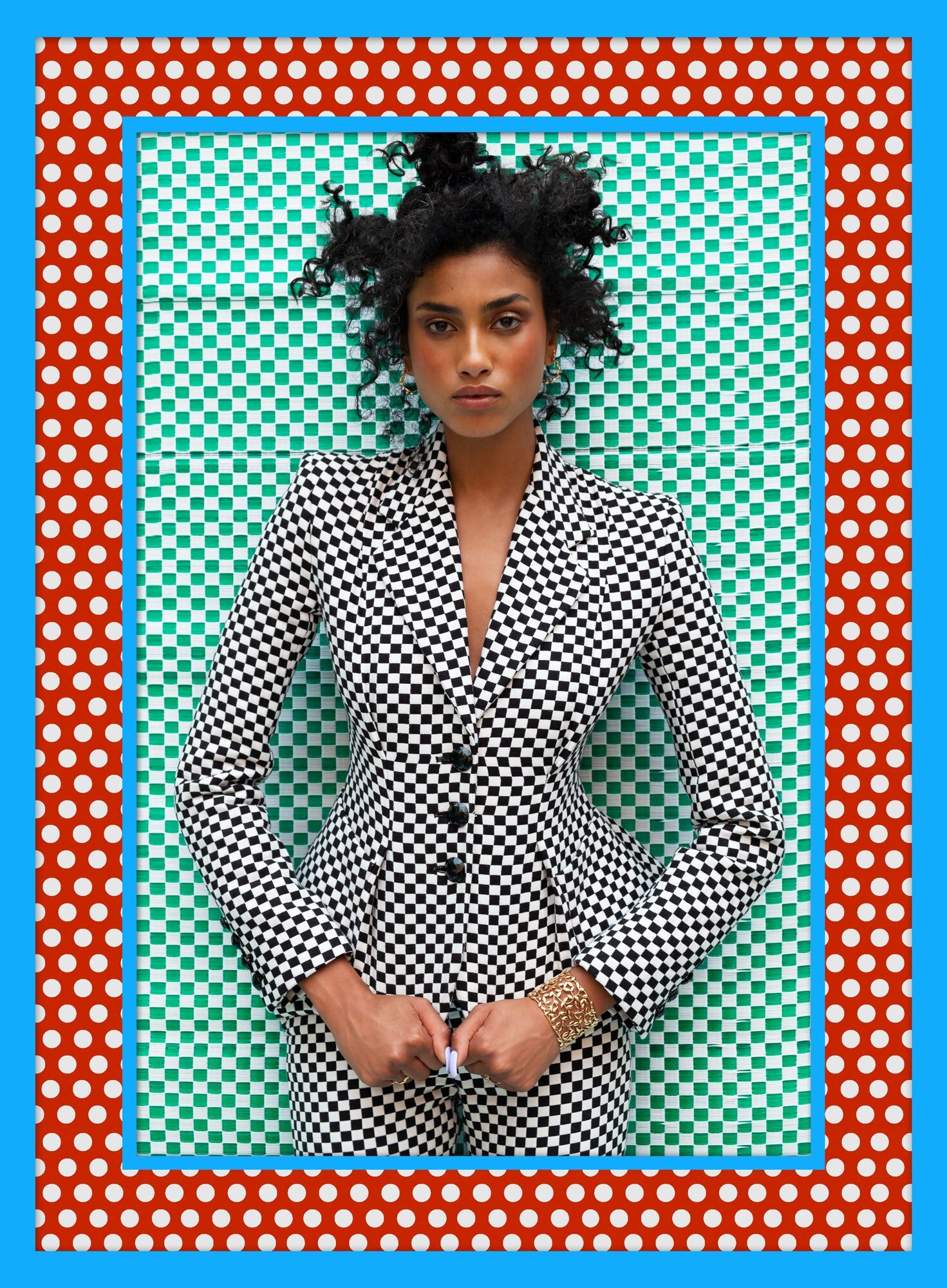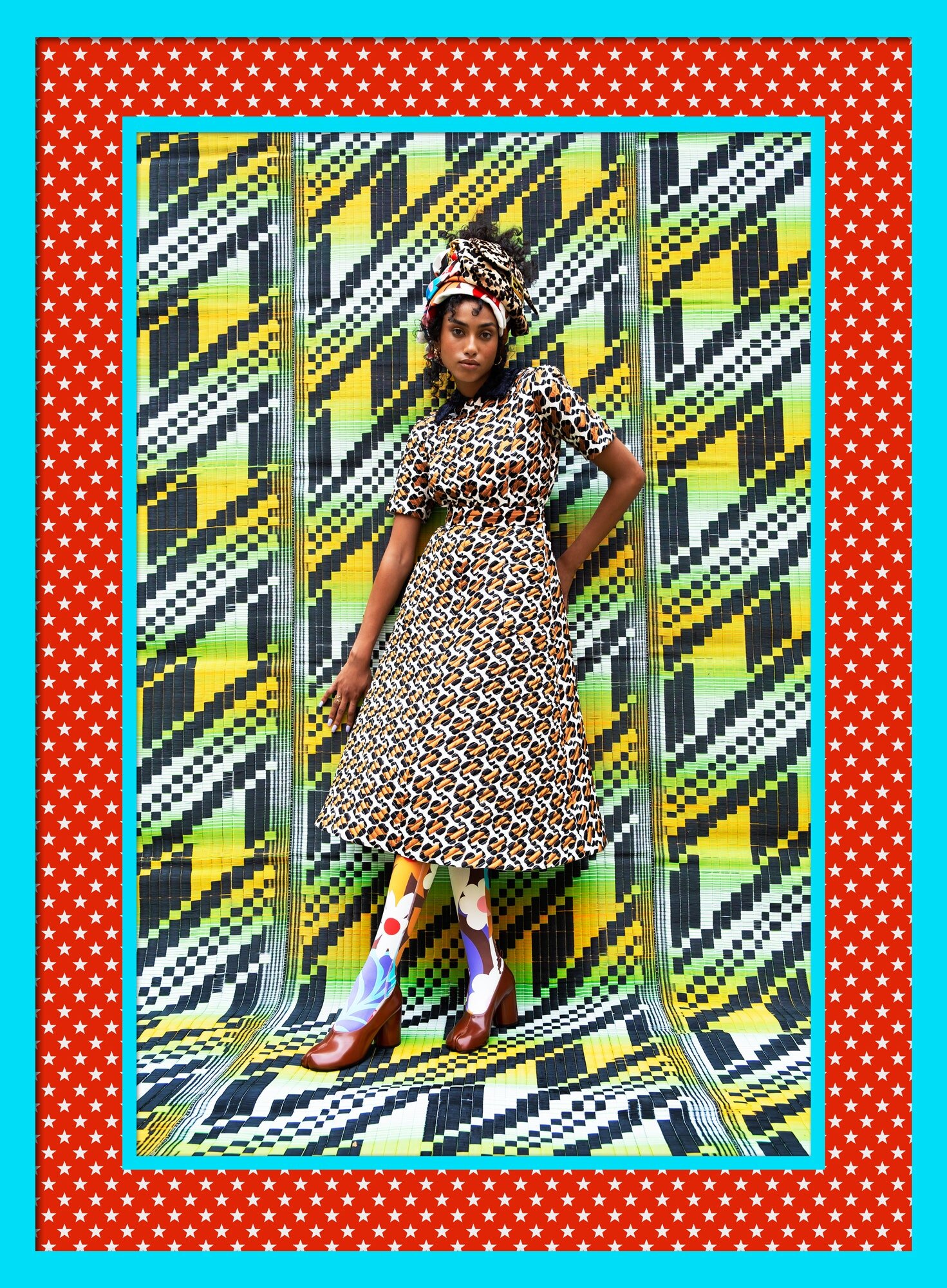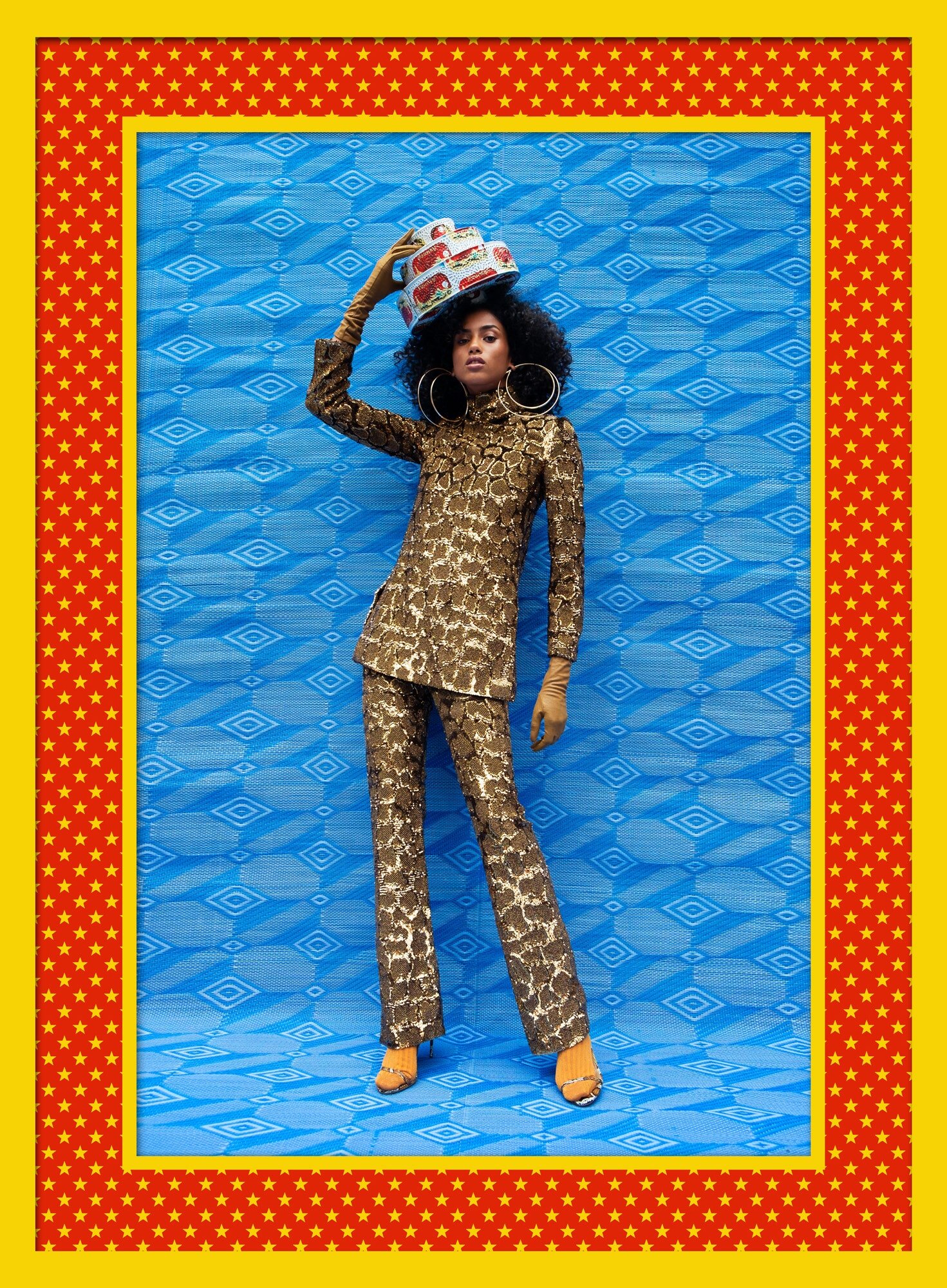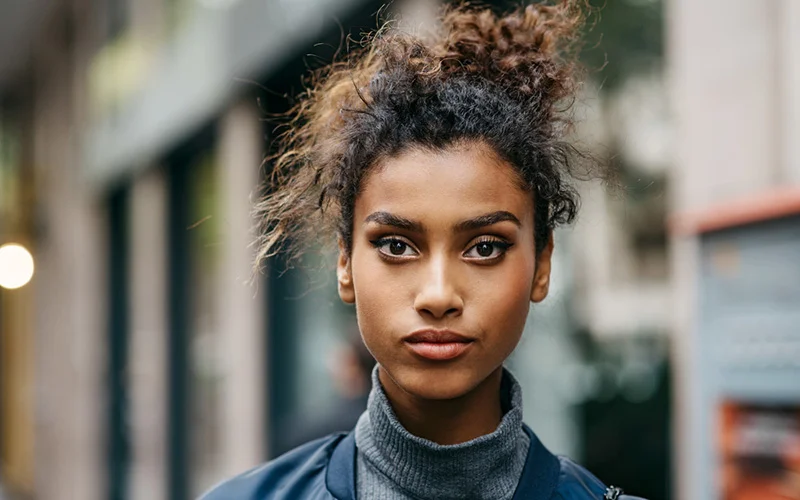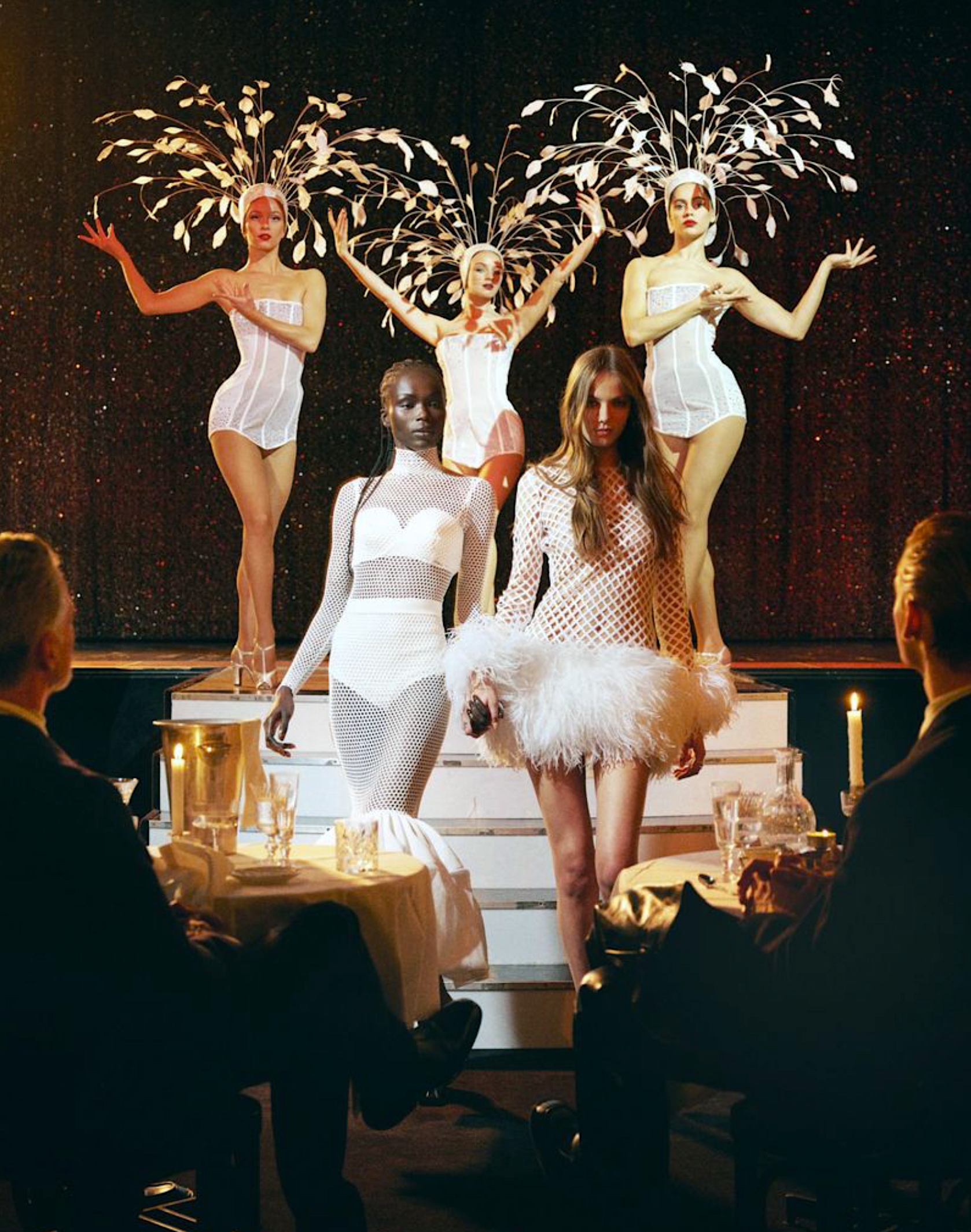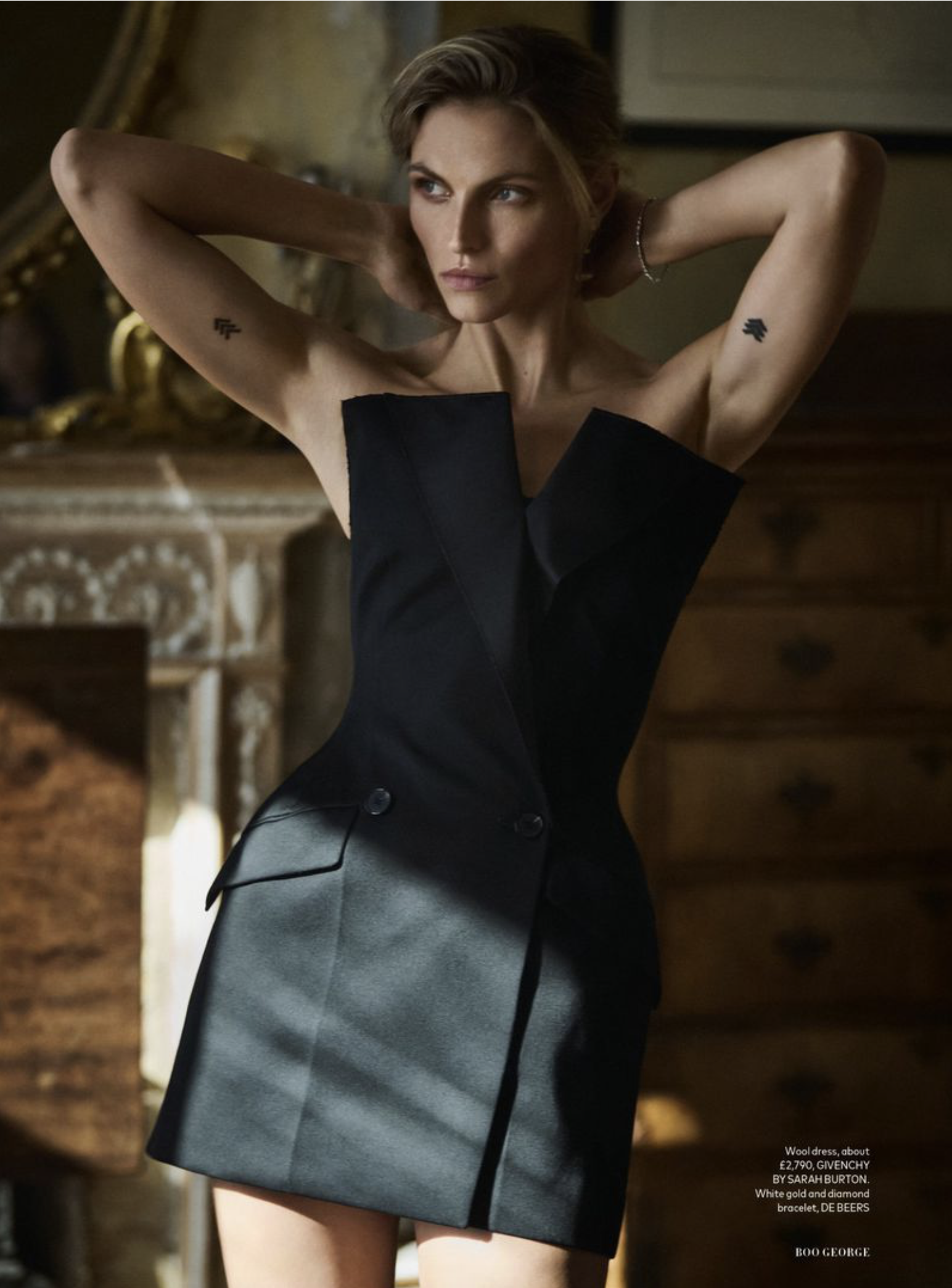Imaan Hammam by Hassan Hajjaj for Vanity Fair US | Interview by Safy-Hallan Farah
/Dutch model Imaan Hammam is styled by Nathan Klein in ‘Pattern Player’, vibrant, bold prints from Celine by Hedi Slimane, Dries Van Noten, Erdem, Fendi, Stella McCartney, Versace and more. Photographer and artist Hassan Hajjaj shoots Hammam against his own renowned artistry for Vanity Fair US October 2020./ Hair by Rio Streedharan; makeup by Florrie White
Safy-Hallan Farah conducts the interview ‘Supermodel Imaan Hammam and Artist Hassan Hajjaj Play With Patterns.’
Safy-Hallan Farah interviews Imaan Hammam in Amsterdam from her home in Minnesota. The girl talk is an appendage to the photography and artwork of Hassan Hajjaj, who lives and works between London, UK and Marrakech, Morocco, and is known as the ‘Andy Warhol of Marrakech’. Cultural fusion is not on the literary menu — Vanity Fair be damned.
Farah gets straight down to skin color — or rather Hammam’s complexion. We actually don’t know if Imaan Hammam considers her complexion to be a “fraught inheritance.” She has appeared on the cover of Vogue 18 times, so Farah might make an inquiry as to Imaan’s opinion. The writer makes her position clear:
Brown skin, in all its complexities, has long been a target for fetishistic food metaphors: caramel, almond, honey, cocoa, coffee. Former Essence editor in chief Marcia Gillespie once called Iman Abdulmajid, the Somali supermodel who graced the cover of Vogue Arabia with Hammam in 2018, “a white woman dipped in chocolate.”
On the subject of DNA, we learn first that tests revealed Safy-Hallan Farah’s lineage to be potentially part Arab. The interviewer puts little stock in the DNA tests, but Hammam does. But, we don’t hear her own thoughts on the subject, because — after all — this writing is not an interview with one of fashion’s top models, but the Minneapolis-based cultural critic’s interpretation of what the model with no voice of her own has said.
On the subject of Imaan Hassan’s DNA, we learn:
“ . . . her DNA reinforces the Blackness that her industry and the world too often deny her, evidence that she is Moroccan and Egyptian, and also Sudanese, Gambian, Senegalese, and Nigerian.”
There’s no mention of Imaan joining her close friend Doutzen Kroes — a white woman also an activist in the fashion industry— to protest in Amsterdam this summer the George Floyd murder. Rather, the brief interview closes with more about the writer — because she is clearly the subject of our interest in her own mind — and the very articulate Imaan Hammam’s cultural interpreter.
Okay, Anne. Stop being a bad girl. Give Safy-Hallan Farah the limelight she so desperately needs to communicate her message.
From my vantage, with an ocean between us and our experience of each other mediated through computer screens, I see an unlikely mirror in Hammam. Even as the room darkens, she is full of light—nur—illuminating from the inside. It’s a light that flickers for daughters of the diaspora.

